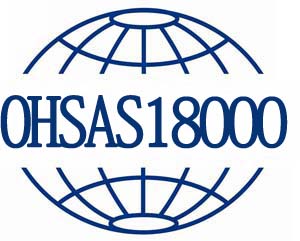مجموعه مقالات ارگونومی
برای مشاهده متن کامل مقالات به ادامه مطلب مراجعه فرمایید
**********برای دریافت مقاله به ادامه مطلب مراجعه نمایید********
1- ارزيابي ريسک ارگونوميکي ناشي از استرس پوسچرال به روش REBA
(حبيبي احسان اله*,پورعبديان سيامك,احمدي نژاد پروين,حسن زاده اكبر)
2- ارزيابي ريسک فاکتورهاي ايجاد كننده اختلالات اسکلتي - عضلاني در کارگاه هاي رنگ کاري صنعت مبل سازي
(رحيمي فرد هدي,هاشمي نژاد ناصر,چوبينه عليرضا*,حيدري حميدرضا,طباطبايي سيدحميدرضا)
3- ارزيابي ارگونوميكي وضعيتهاي انجام كار در كاركنان پرستاري بخشهاي داخلي- جراحي بيمارستانهاي وابسته به دانشگاه علوم پزشكي بيرجند
(نخعي مقدم مريم*,فرج زاده زهرا,طبيعي شهناز,سعادت جو سيدعليرضا,محمودي راد غلام حسين,حسيني محمدحامد)
4- ارزيابي ارگونوميكي وضعيتهاي كاري شاغلين حرفه هاي دندانپزشكي شهرستان بيرجند به روش (Rapid Entire Body Assessment (REBA
(نسل سراجي جبراييل*,شاه طاهري سيدجمال الدين,حسيني محمدحامد,گل بابايي فريده,قاسم خاني مهدي)
5- ارزيابي ارگونوميک خطر ابتلا به اخلالات اسکلتي - عضلاني به روش QEC در يک کارخانه لاستيک سازي
(چوبينه عليرضا*,مختارزاده عباس,صالحي مريم,طباطبايي سيدحميدرضا)
6- ارزيابي ارگونوميک ريسک فاکتورهاي اختلالات اسکلتي - عضلاني در کارگران ساختمان سازي به روش PATH
(حاج آقازاده فيرورق محمد,نسل سراجي جبراييل*,حسيني سيدمصطفي,عدل جواد)
7- ارزيابي ارگونوميکي وضعيت هاي کاري کارگران مونتاژکار يک کارخانه خودروسازي به روش رولا
(قاسم خاني مهدي*,اعظم كمال,آتن شيوا)
8- ارزيابي ارگونوميکي وضعيتهاي کاري شاغلين نانوايي هاي شهر اراک به روش OWAS
قمري فرهاد*,محمدبيگي ابوالفضل,تاجيك رضا)
9- ارزيابي ريسكهاي ارگونوميكي ناشي از كار از طريق بررسي شاخص فعاليتهاي تكراري شغلي (OCRA) در صنعت مونتاژ
(حبيبي احسان اله*,كريمي سارا,حسن زاده اكبر)
10- ارزيابي ريسک ارگونوميکي ناشي از استرس پوسچرال به روش REMA
حبيبي احسان اله*,پورعبديان سيامك,احمدي نژاد پروين,حسن زاده اكبر)
11- ارزيابي وضعيت ارگونوميك مشاغل يك كارگاه سد سازي با استفاده از چك ليست NIOSH-CPWR
(غيبي ليلا,نسل سراجي جبراييل*,زراعتي حجت,پوريعقوب غلام رضا)
12- ارزيابي وضعيت ارگونوميکي کارکنان ايستگاههاي کاري آزمايشگاههاي بيمارستانهاي دانشگاه علوم پزشکي اصفهان
حبيبي احسان اله*,يارمحمديان محمدحسين,پورعبديان سيامك,قرباني هلدا,سلطاني عباس)
13- طراحي و ساخت تكيه گاه بازوي ارگونوميك قابل تنظيم براي كاربراي كامپيوتر
(حسيني محمدشريف,الهياري تيمور*)
14- مطالعه ارگونوميک (شناسايي، پيش بيني و کنترل) خطاهاي انساني در يکي از اتاق هاي کنترل صنايع پتروشيمي با استفاده از روش SHERPA
(قاسمي مهدي,نسل سراجي جبراييل*,ذاكريان سيدابوالفضل,اژدري محمدرضا)









